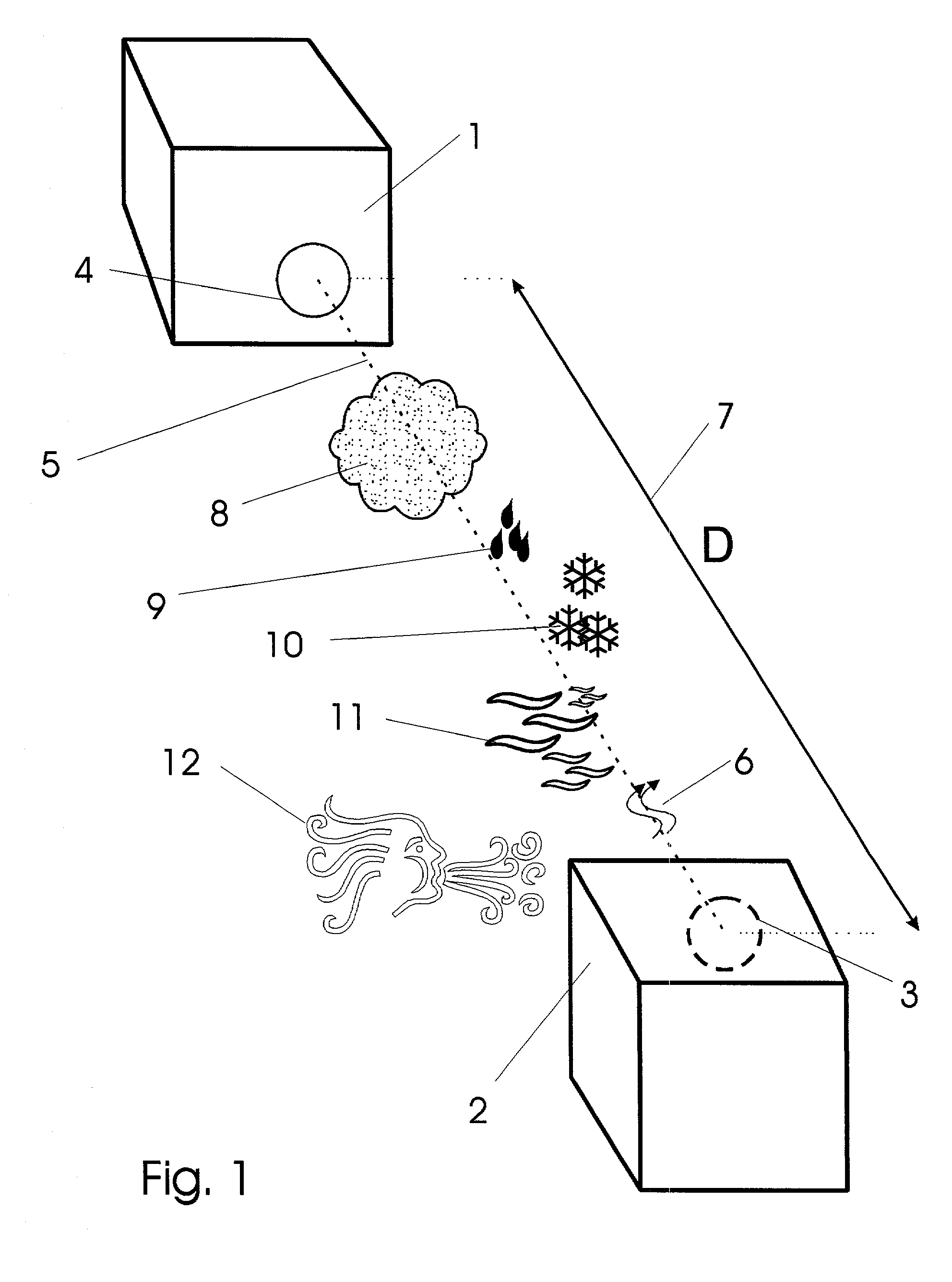Free space optical communications link tolerant of atmospheric interference
a technology of optical communication and atmospheric interference, which is applied in the direction of electromagnetic transmission, electrical equipment, transmission, etc., can solve the problems of inability to easily use systems of common wavelengths in shared space, radio signals from more than one system using radio waves are intrinsically rather omni-directional, and can not be easily used by more than one system using the same space. , to achieve the effect of high reliability and high resistance to failur
- Summary
- Abstract
- Description
- Claims
- Application Information
AI Technical Summary
Benefits of technology
Problems solved by technology
Method used
Image
Examples
Embodiment Construction
[0066] One will gain a firm and complete appreciation for details of the invention in consideration of drawing figures appended hereto and following descriptions of those figures. With regard to drawing FIG. 1 which is a generalized perspective block diagram showing major elements of a free space optical communications link highly resistant to interruption by atmospheric components. In particular, a first transceiver 1 is in communication with a second transceiver 2 by way of their optical ports or apertures 3 and 4. More precisely, a free space path along an optical axis 5 accommodates propagation of optical radiation 6 in the form of a light beam generated at either of the transceivers. The path is preferably cylindrical and some preferred versions have circular cross section. The free space path has a discrete length `D` indicated in the figure by numeral 7. Further, the free space path may contain therein components unfriendly to the propagation of optical beams such as fog and ...
PUM
 Login to View More
Login to View More Abstract
Description
Claims
Application Information
 Login to View More
Login to View More - R&D
- Intellectual Property
- Life Sciences
- Materials
- Tech Scout
- Unparalleled Data Quality
- Higher Quality Content
- 60% Fewer Hallucinations
Browse by: Latest US Patents, China's latest patents, Technical Efficacy Thesaurus, Application Domain, Technology Topic, Popular Technical Reports.
© 2025 PatSnap. All rights reserved.Legal|Privacy policy|Modern Slavery Act Transparency Statement|Sitemap|About US| Contact US: help@patsnap.com



